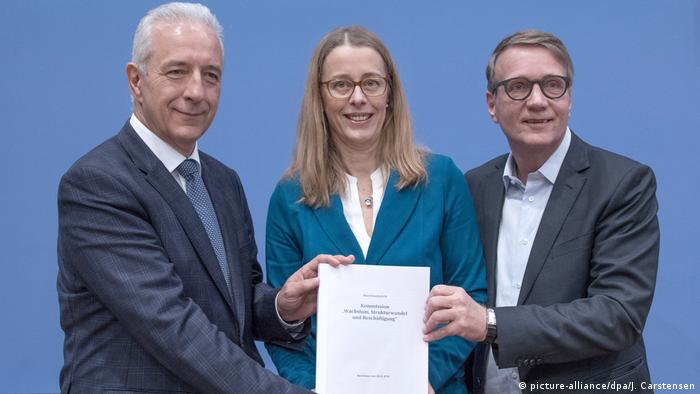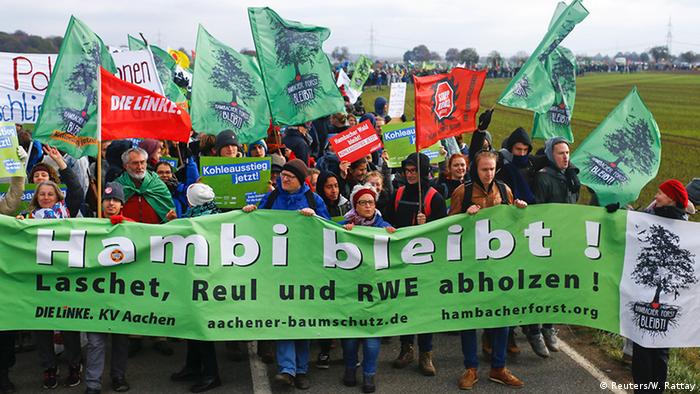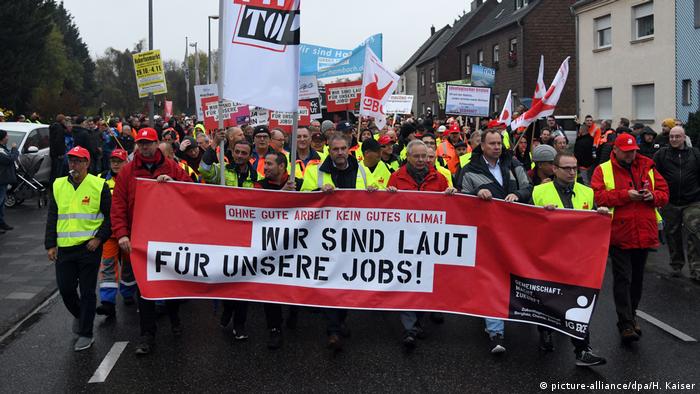Faster shutdowns, constant current prices and list ways of funding projects. The Commission on growth, structural change and employment has submitted 336 pages the final report. We have looked at.

The Chairman Stanislaw Tillich, and Barbara Praetorius, and Ronald Pofalla prior to the final report
What will now happen to the electricity from coal?
In order to reach the climate goals of the energy sector, the Commission sees the need for coal-fired power plants to grow earlier still, as previously provided. According to the final report by the end of 2017 were in Germany, coal-fired power plants with a generation capacity of 22.7 gigawatts (GW) and lignite-fired power plants 19.9 GW in operation. According to current planning, the Commission notes, would be in 2030, up from 16 GW in lignite – and 11 to 17 GW of coal capacity is left.
The Commission considers that it would be too much. Instead, it recommends that capacity until 2022 to 15 GW to shut down. By 2030, a further 6 GW of lignite and 7 GW of coal will go from the network. The final end of the coal-fired power generation in Germany is to be done, therefore, by 2038 at the latest.
The means by which this is to be achieved?
The Commission does not order the power plants will be closed. Some power plants are already closed for economic reasons in the next few years still. For the other, advises the Commission to negotiate with the Federal government to a “consensual agreement on a contractual basis”. Therein, both the Form and amount of remuneration for the company as well as a socially acceptable should be determined removal.
In particular, for the coal-fired power plants, the Commission proposes to set-aside payments out to tender. The Supplement should be decided on the basis of various criteria, including the expected emission savings, taking into account the power-to-heat-to – power, as well as economic and social disadvantages for the people concerned.

As these demonstrators, the Commission considers that it is “desirable that the hambach forest remains intact,”
It should come to no agreement with the power plant operators, “the Commission recommends a regulatory solution with compensation payments in the framework of the legal requirements”.
How much climate protection?
In comparison to the reference year 1990, the energy sector had reduced its emissions by 2016, according to the Federal environment Agency by over 22 percent. With the proposed measures in the final report, will have reduced the energy sector to have its emissions by 2022, to Double. By 2030, the emissions went down to at least 61 percent.
Thus, in Germany, the saved emissions are not simply sold on the CO2-certificates in the European Union in the EU and consumed there, advises the Commission, to delete the Federal government shutdowns released certificates from the national auction budget.
The electricity in Germany is now more expensive?
The cost of the accelerated decommissioning of coal-fired power plants should not be apportioned according to the view of the Commission on the price of Electricity. However, it could result in different factors to a further increase in the price of Electricity. In order to protect private consumer, but also the energy-intensive industry and the business location Germany to a high cost, the Commission proposes to make to keep the price of Electricity from 2023 constant. This compensation will annually cost at least two billion euros, to be paid from tax funds.
Whence then comes the power?
The Commission stresses the importance of the security of supply for the national economy. To achieve this, is to be replaced, a portion of the coal-fired power plants by gas-fired power plants, which are considered to be climate-friendly. In addition, electricity storage is to keep the reserves for bottlenecks at the ready. In order to make renewable electricity independent of location and time of production to use, are also adequate Transmission and distribution networks and other energy storage facilities. Also, the flexibility of the electricity consumption and smart grids, the requirements of efficient taxes, should play its role to secure the supply of energy in Germany.

October 2018: Demonstration against the end of the coal-fired power generation in the Rhineland town of Bergheim
What about the employees?
The future of the energy supply is for the Commission a starting point for the structural change in the affected regions. Not only in the interests of workers, but also because they already have the infrastructure – including power grids – had, would it, that you stay in power locations. Therefore, the technology should be skills “and the ability to innovate, as well as the use of renewable energy, Save and green hydrogen (Power to Gas) as the technology of the future in the affected areas.”
For each of the regions concerned, the Commission took account of individual proposals. The “project lists” of the brown coal to countries (including the Saar) form 199 pages.
Finally, these recommendations are?
As the word says: It is recommendations. The Federal government is not bound by them. The proposals of the Commission by the relevant ministries. Whether and to what extent they are implemented, it will show.
However, there is evidence not to be found in the final report that the pre-signed path is final. So, for example, data called to which is to be verified, whether the measures continue to be feasible to appear and, whether you like provided access – for example, with regard to the climate targets, the electricity price, security of supply or the employment situation in the regions.

